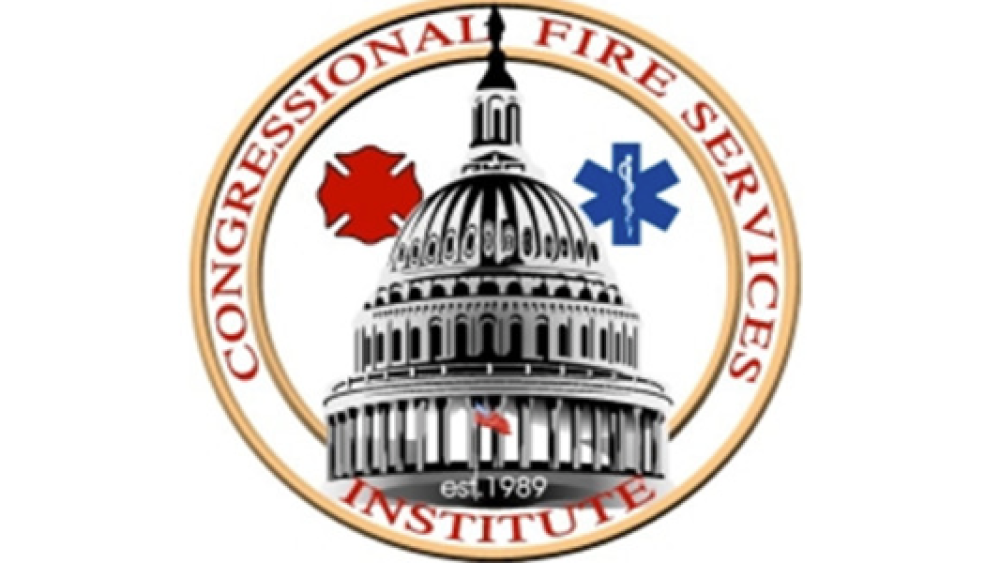WASHINGTON — The Congressional Fire Service Institute‘s annual dinner and two-day lobbying event is focused on putting fire service leaders in direct contact with their national elected officials.
Many leaders spend the two days combing the halls of the Senate and House buildings to meet with staff and congressional members to discuss the pressing issues facing the fire service. The dinner brings elected and appointed officials to the fire service with speeches and pledges of support — this year’s keynote speaker was Vice President Joe Biden.
CFSI is composed of 36 member-based emergency services groups and serves as a one-voice advocate for fire and EMS issues. Remarkably, CFSI pulls all of this off with only two full-time, three part-time and intern staff members.
In addition to the dinner and trips to Capitol Hill, CFSI puts on a series of hour-long seminars. Some of this year’s educational sessions hit on three key issues: firefighter health and wellness, roadside safety and community risk reduction.
Health and safety
Three researchers immersed in fire-service issues addressed firefighter health and safety issues. David Hostler of SUNY University at Buffalo said the number of academic peer-reviewed papers published on fire-service issues jumped when the Federal Emergency Management Administration began funding the work in the early 2000s; the first bump came in 2005 and a significant increase came after 2010.
One of the areas getting a lot of attention is the high number of cardiac deaths among firefighters. Hostler said one study looked at firefighter heart rates before firefighting, before rehab and after rehab and came away with a surprising finding.
Firefighters were lumped into three fitness categories: poor, medium and very fit. Those with medium levels of fitness were able to work hard during firefighting activities, but took the longest for their heart rates to recover in rehab — even longer than those in the poor fitness category.
Another study revealed that firefighters were chronically dehydrated, even on cool autumn days before starting firefighting activities, said R. Sue Day, a researcher with Michael and Susan Dell Center for Healthy Living. Day also said that studies show 78 percent of volunteer and 79.5 percent of career firefighters to be either overweight or obese.
That, she says, is likely due to poor food choices, a schedule that doesn’t allow proper exercise and the metabolic impact of shift work. Day says that minority firefighters tended to have poorer body composition and more poor-health days than their Caucasian counterparts, while female firefighters fared better than men on both counts.
Sara Jahnke, a researcher with the Center for Fire, Rescue and EMS Health Research and a FireRescue1 columnist, said researchers are finding the incidents of depression in firefighters twice that of the general public. One area they are looking at to understand this phenomenon is if there’s a cumulative effect to repeated exposure to traumatic events as opposed to single-incident stress disorders.
Day said they are also looking at if the large number of former military veterans in the fire service plays a role by adding the stress from military service to that accumulated by firefighting and EMS work.
Roadside safety
Science and research were also among the items traffic-safety experts discussed in their session on how to keep firefighters safer on roadside incidents.
The U.S. Fire Administration‘s William Troup said a study involving the Society of Automotive Engineers is looking at the effectiveness of emergency lighting. One of the early findings is that blue is the best light for emergency lighting and that rear-facing white lights are the most dangerous.
Reflective materials worn by responders remain among the best defense, Troup said. In driver simulation studies, participants were able to spot emergency personnel in reflective gear hundreds of feet before being in striking distance; those without reflective material were not seen until after the motorist passed.
Jack Sullivan of the Emergency Responder Safety Institute said some of the problem with emergency lighting lies with what fire departments want on their trucks. Manufacturers can equip rigs with a low/high switch to dim emergency lights when on scene, thus reducing the blinding effect on motorists.
However, he said, departments rarely order that option and manufacturers will give departments what they want. “There’s a disconnect between how the lights are used,” Sullivan said.
Another means to improve safety will be to have all responders trained on roadside safety techniques. About 102,000 responders have been trained through programs like that at the Emergency Responder Safety Institute, with the goal set at having 1.5 million responders trained.
Northville Township, Mich. Fire Chief Rich Marinucci said firefighter and EMT complacency was a huge barrier and that the fire chief’s salesmanship will be the determining factor in getting firefighters to buy into roadside safety practices and programs.
There is also work underway to get the message out to the general public about the dangers of being a distracted, drunk, drugged or drowsy driver around emergency scenes.
Community risk
One way to reduce the risk to firefighters is to reduce the number of emergencies they are exposed to — that means preventing the emergency from happening.
One of the more effective ways to do this is by identifying high-risk areas within the community and conducting in-home visits. That can be a difficult sell to both firefighters and the community. But, once that initial barrier is breached, both groups typically become strong advocates of such programs.
Nancy Trench with International Fire Service Training Association told about Philadelphia’s effort to reduce its home fire death, which was twice the national average. That department installed 7,000 alarms by visiting homes on Saturdays when residents were likely to be home and by notifying them early that they were coming.
Tucson was looking to do a similar program, but had difficulty gaining the trust of its at-risk community. That department found an existing social-services group that was already doing home visits and trained them on how to install alarms and conduct basic inspections.
And that, she said, all came together because the chief was active in the community and served on an advisory board where he met someone from the social-service group.
Vision 20/20‘s Jim Crawford said there is some hesitation on the part of departments to do in-home visits for fear that they may be sued. A legal group called Project Paradigm is working on a standard waiver, legal advice and a low-cost insurance policy for fire departments with this concern.
However, he said, there is no case law of a department or firefighters being sued for wrongly installed smoke alarms.
Vision 20/20’s Meri-K Appy said they are close to rolling out a self-guided online module that fire departments can use to build their community risk reduction program around. It will help fire departments assess their need and match a program to those needs.
“Not every problem is a nail and a hammer doesn’t always work,” Crawford said about the level of community assessment needed to make a risk-reduction program work.













